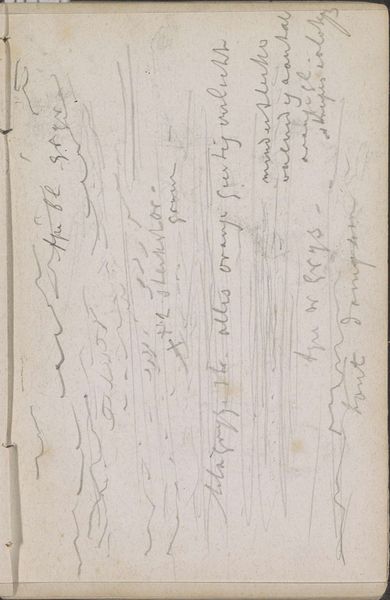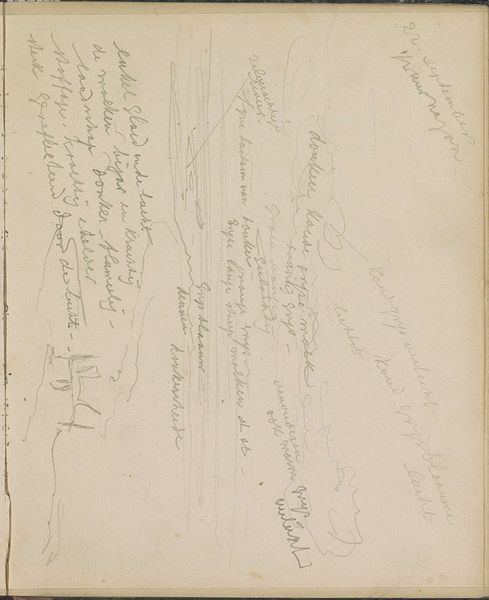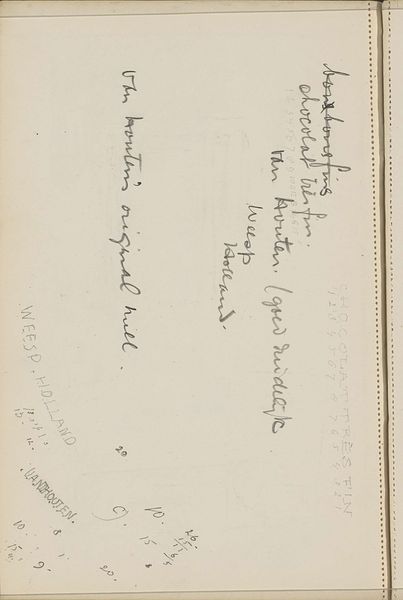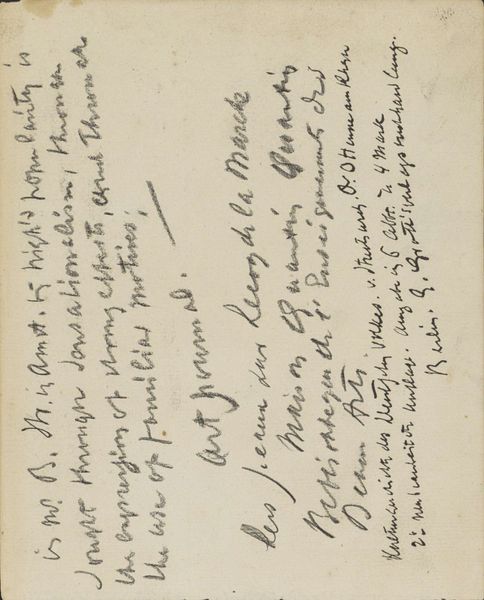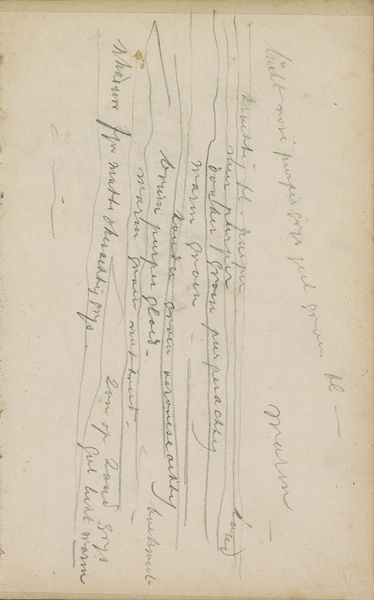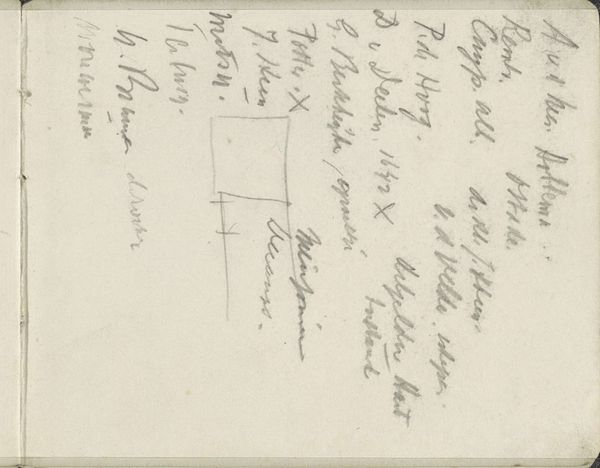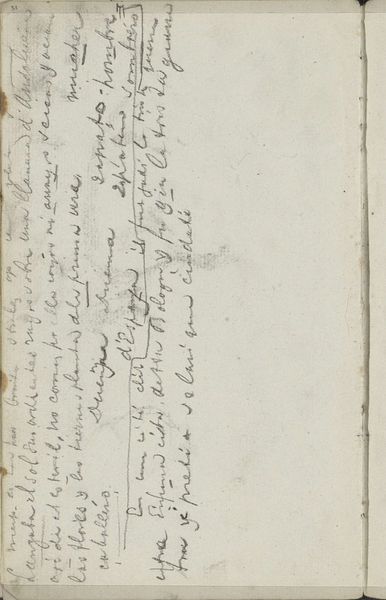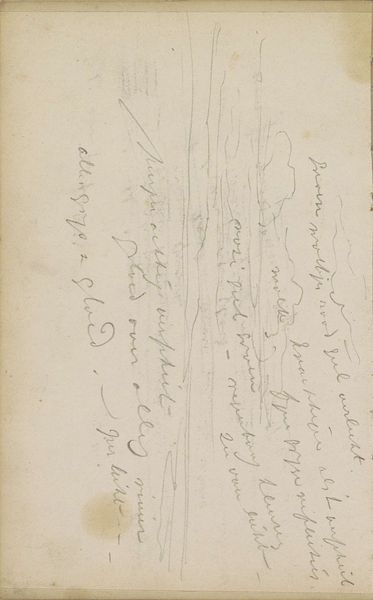
Copyright: Rijks Museum: Open Domain
Editor: Here we have "Cloudscape over a landscape with trees," a pencil drawing by Johannes Tavenraat, created between 1862 and 1864. The lines are so delicate, it almost feels like a fleeting thought captured on paper. I'm struck by the use of line to create a sense of depth and atmosphere, but I wonder, what else do you see in this piece? Curator: Its linear construction dictates our visual perception; notice how the composition unfolds through variations in line weight, its directionality generating recession into space. Thicker lines create a horizon, whilst thinner strokes define the ephemeral cloud forms. It invites contemplation about the artistic process itself – do these rapid notations denote the immediacy of capturing light or structure a pre-meditated formal study? Editor: I see what you mean. So, instead of focusing on the landscape itself, you are drawn to the mechanics of how it was made? Curator: Precisely. Observe, for instance, how the hatching – a technique of parallel lines – serves not only to build tone and shadow, but creates textural variations on the page; can this manipulation of the medium speak to the dynamism and emotional turbulence characteristic of Romanticism? Does it succeed in evoking a particular sense of the sublime, even within such a limited tonal palette? Editor: That's fascinating! I hadn't considered how much the technique contributes to the overall emotional impact. Curator: Consider also the stark white space - an integral component, working with the graphite markings, defining the artwork’s formal vocabulary. Editor: I appreciate that focus. It has prompted me to examine not only what is represented, but also how the representation takes place via this line-based rendering. Curator: Exactly; by exploring such intrinsic qualities, we arrive at a more nuanced perception of Tavenraat’s vision.
Comments
No comments
Be the first to comment and join the conversation on the ultimate creative platform.

